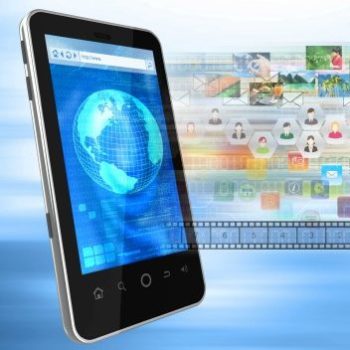Five Things Brands Must Know Before Running Mobile in Indonesia

It is the world's fourth most populous country and third-largest mobile phone market; but, for all its opportunities, Indonesia will prove difficult for brands to manoeuvre if they do not first understand the country's unique landscape. In this week's industry byliner, Stephanie Conlon, Amobee's Southeast sales and client services director, shares her insights and tips that advertisers should keep in mind before attempting to deploy a mobile ad campaign in Indonesia.
With over 249 million people, Indonesia offers a huge market for global and local brands. Amid its rapid urbanisation and growing middle classes, technology (in particular, mobile phones) can help unlock access to the nation's potential consumers. However, where there are opportunities, there also are pitfalls to avoid for anyone looking to run a mobile ad initiative in Indonesia.
Here are the top five considerations for activating mobile campaigns there:
1. Size doesn't mean reach.
Mobile infrastructure is key when you're planning a mobile advertising campaign in Indonesia. You can only serve a mobile display ad to a device that has 3G, 4G or Wi-Fi connection and, ensuring this in a country split over 17,000 islands, is understandably difficult.

Stephanie Conlon
While mobile penetration stands at 121% and Indonesia is now ranked the world's third-largest smartphone market, as of January 2016, only 25.7% of these device owners were able to access either 3G, 4G, or Wi-Fi connection. Therefore, your target audience pool is significantly reduced. There are alternatives to display, though. SMS, MMS, voice ads, and coupons, for instance, are all still dominate in the Indonesian market, making these a must-have for any on-the-ground mobile strategy.
2. Third-party tracking isn't the norm.
It is increasingly important for clients to implement their own third-party tracking tags into their mobile campaigns. This enables media teams to independently verify that a campaign has been delivered, measure cross-device attribution, and report on total campaign reach and frequency. Yet, in Indonesia, many vendors do not have the capability or delivery platforms to facilitate these tracking requests. A recent conversation with a local agency revealed plans to run the same campaign for a third time because the client's tags were not implemented correctly.
This inability to enable independent tracking has the potential to stop many established brands and global clients running mobile campaigns. While this issue is not unique to Indonesia, and is just as challenge for other developing Asia-Pacific countries, if expectations are adjusted, an acceptable middle ground can be established, for instance, with automated, platform daily reports.
3. The 'Made in Indonesia' rule.
Much has been made of the 'Made in Indonesia' smartphone law, which states all vendors selling 4G smartphones will have to produce an estimated 30% of their devices locally by 2017.
Major brand players in the 4G market including Samsung, Apple, and Xiaomi, currently do not have factories in Indonesia; and this can lead to a loss in market share over the next year. Local brands that dominate the feature phone and 3G markets, such as Mito, Polytron, Advan, Himax, and Evercoss, are expected to grow in scale and become the main platforms for brands to connect with consumers. This can curtail the growth of mobile advertising, especially for clients looking to execute a global or regional mobile strategy.
More investment will be needed for localisation, with careful thought and consideration critical in understanding the handsets, their functionality, and screen sizes. Dynamic ad-serving platforms that render ads based on the device will grow in importance. Equally crucial is having someone in-market, be it on the brand, agency, or vendor side, who knows the local landscape.
4. Boots on the ground.
On-the-ground support is key to the successful launch of a mobile campaign. A digital lead from an Indonesian agency once revealed that one of the biggest reasons mobile was taking so long to grow, in terms of investment share, was because the market currently only has three mobile-specific vendors. This lack of competition has resulted in complacency among those that dominate, fatigue in planners, and a lack of excitement and innovation.
There are opportunities to buy with regional outlets, but they don't truly understand local market nuances, rarely speak the local language of Bahasa, and struggle to communicate through bad conference call or Skype connections. Having face-to-face meetings with local talent on the ground is a must.
5. Think prepaid, not postpaid.
In most countries, having more than 300 million mobile connections would mean lots of data, encompassing rich, explicit demographic and behavioural data, and the likes of which only Facebook, Apple, Amazon, and Google could offer. Postpaid customers have to sign up for their mobile contracts and, in doing so, share information in terms of their age, gender, income, as well as household type and size with their operator.
However, Indonesia is a pre-paid market. This means SIM cards can be bought with no contract and no data is passed. Initiatives that have worked in other prepaid markets, for example, where consumers share their data with their operator in exchange for free minutes or data, are not gaining the same level of traction in Indonesia. As such, brands here do not have similar opportunities to access rich pools of data for targeting.
While Mercedez in Spain recently announce it was using operator data to make their customer connections on mobile more targeted, this is still very far away from a reality in Indonesia.
There is also a growing trend for 'multi simming'. In a recent conversation, a global FMCG brand operating in Indonesia bemoaned the constant need to qualify and refresh their four-million-customer database, as it rapidly went out of date, due to the fact it was cheaper for prepaid users to simply get a new SIM, rather than top up an existing one.
Initiatives that can deliver customers something they value are incredibly important if you want to grow and maintain a database, such as BlackBerry BBM, which still has 55 million active users in Indonesia.
To sum up, the size of the Indonesian market opportunity is often hypnotising for brands; but a measured and considered approach is key, particularly when it comes to mobile marketing. In a country where access to fixed line internet is limited, the mobile is front and centre of connecting with consumers, and with experts that have the local experience and on-the-ground knowledge is the key to success.








Follow ExchangeWire